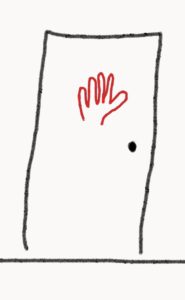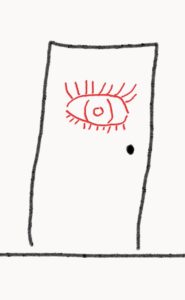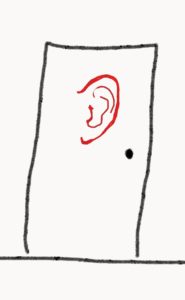I got stuck trying to write the word coupon last week. If I had followed the advice of my elementary teachers I would have sounded it out which would have left me writing qupon.
I knew that was wrong. I remembered it started with a c—so cupon made sense to me. But I kept getting the red line beneath it. I tried copon, but that was also a fail.
Finally I asked a co-worker who immediately not only gave me the correct spelling but gave me a nifty way to remember the correct spelling forever. (I love it when friends do this for me!) She said “I owe you a coupon”—which, in our age of texting, gave me the perfect reminder. I o u helps me remember coupon has an o and a u. That is one auditory way to learn spelling.
We get information inside through what we SEE, HEAR, and DO—those are the 3 doors. For the most effective learning—use all 3. You do not have to figure out who is an auditory learner, or visual, or tactile—all who have eyes and ears and ability to participate are ALL of these.
We’ve already had Teaching Spelling Part 1—Visual.
Here are a few word-learning ideas you can HEAR.
- Make up a phrase that emphasizes part of the word: I o u a coupon.
- Mispronounce the word to emphasize part of a word to make it easier to hear the letters to spell: conSCIENCE. CUPboard
- Sing a song: remember b-i-n-g-o (There was a farmer had a dog…) or b-o-l-o-g-n-a (“my bologna has a first name…)
- Use rhythm: Miss iss ipp i
- Try contrast: quietly say all the letters except the ones causing problems for you. SHOUT those letters.

Here are a few word-learning ideas you can DO.
- Cheerlead the letters. If you’re not sure how, ask a cheerleader to spell the word y-e-l-l for you and they will probably stomp and clap in a specific way—they have done it many times.
- Use motions with meaning. If learning there—swing one arm out to the side on the final e to remind yourself that there has to do with a location (over there). If learning their—stand up on the i to remind yourself that their has to do with people.
- Clap or stomp—this helps especially on double letters. Or you can spell with a clap between syllable breaks.
- Rainbow write while you say the letters (visual, auditory, and participation)—Write the word for the student so that it is spelled well and written in nice handwriting. The student can copy over the top a few times—changing colors each time—while saying each letter as they form it. (The word does end up mostly black.)
Your goal in teaching students how to learn words through what they SEE, HEAR, and DO is not just to get them learning the words. Teach them these strategies so they will know how to learn new things they encounter. The best learning incorporates all 3 doors.
What are words you learned through HEARING, SEEING, and/or DOING?




Could you clarify some things? Your arguments should be accepted and normal for all…it’s just that..I’d add extra lessons that support this. With respect- ty for reading.